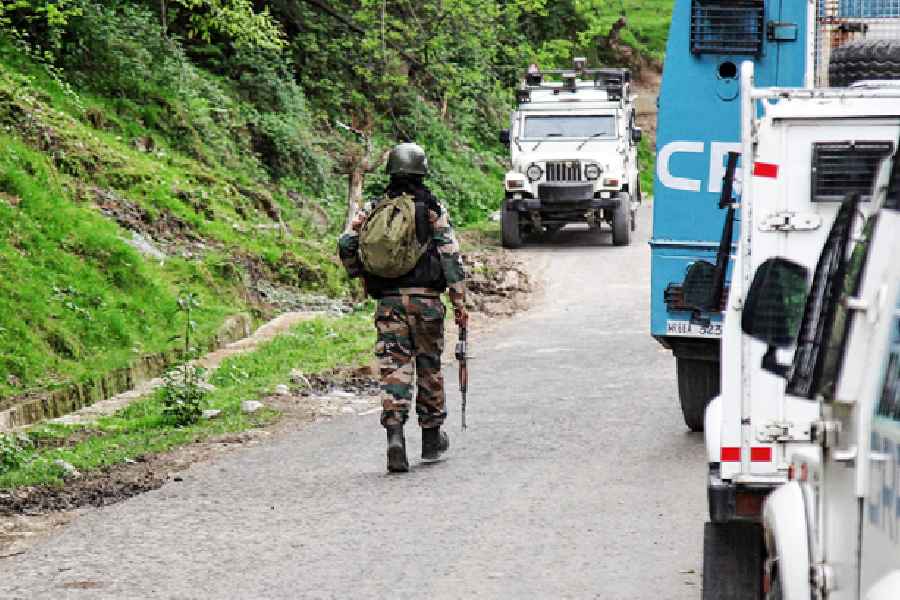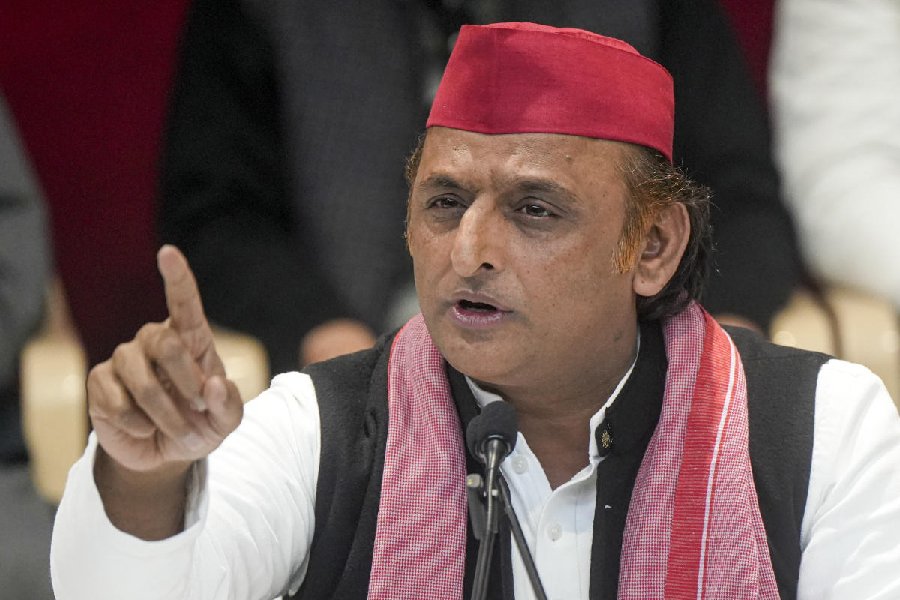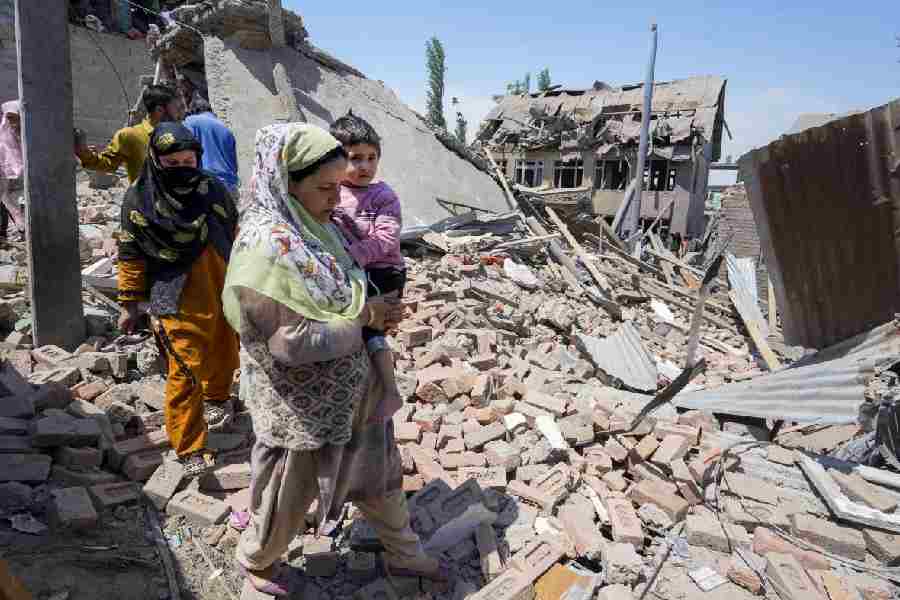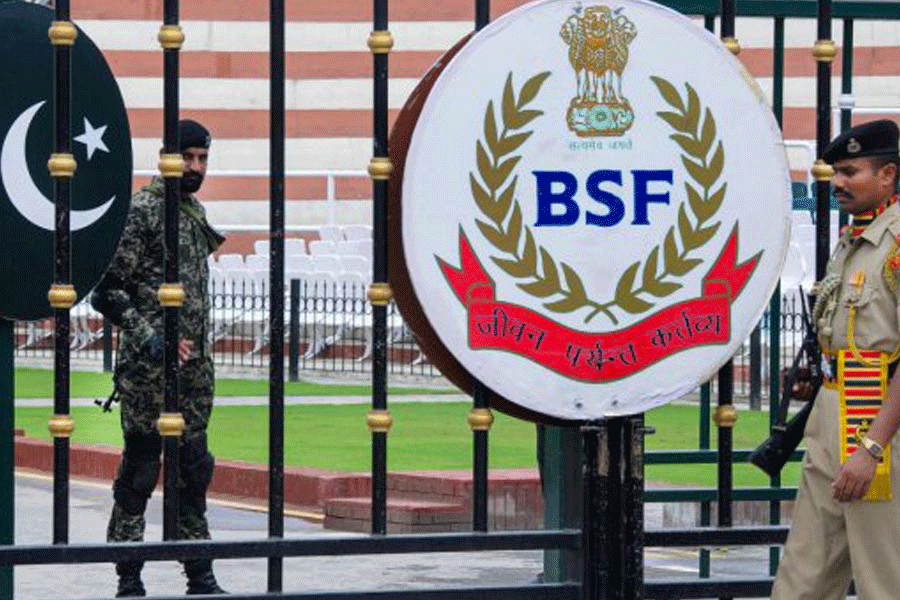 |
Ballygunge had paddy fields in the 1930s, and before urbanisation, the cluster of villages that later became the great metropolis of Calcutta, was dotted with innumerable small ponds and cesspools which were the breeding ground of numerous ailments, malaria included.
Haripada Bhowmik in his article on the ponds of Calcutta quotes Brahmo social reformer Shibnath Shastri as saying that each little household with a paddy field of its own used to have a tiny pond as well. The British government had, besides, dug some huge tanks meant for the supply of drinking water. Bathing was prohibited in these.
The most prominent of these waterbodies was Laldighi in the middle of Dalhousie Square. Men from Odisha used to supply homes with water from Laldighi. But once tap water was introduced these ponds and tanks became redundant.
Bhowmik quotes the journal Bharat Sanskarak as reporting that while there was a great demand for land as the city expanded, these ponds served no purpose any longer. So the Calcutta Corporation was under great pressure to fill up these waterbodies. Soon ponds and waterbodies became rare in the city.
If one says today that a tank existed where Curzon Park is located today, and that another waterbody occupied the space where Allen Park at the Park Street-Camac Street crossing is sprawled out now, it seems like a test of credulity. But maps of old Calcutta prove that the Dharamtala Tank existed and there is photographic evidence of this too, and so did the tank at Allen Park, although they have long since disappeared.
Most of the tanks in Dalhousie Square and along Chowringhee are neglected, and one would not be surprised if they fall victim to development. It was not too long ago that there was a proposal to build a gallery in the space occupied by Jhinjira Talab on the Indian Museum-Government College of Art & Craft premises.
Metro takes a look at five prominently-located tanks in central Calcutta, three of which are in urgent need of care.
Laldighi
Nobody knows for sure if the Seths, the original residents of the villages (along with the Basaks), that constituted Calcutta, had dug the tank in Dalhousie Square or if it was the handiwork of the British, but there is general consensus about the fact that the water of this rectangular tank was the sweetest in the city. Around the tank was a beautifully laid-out garden which people would visit in the evenings. Its deterioration was triggered off by the introduction of the mini-bus stand, and after construction of the underground car park began in 2007, the tram lines and some trees were removed. A rooftop garden was created which partially camouflages the subterranean construction, but the pathway, which is partially paved, has become too narrow, is hardly ever cleaned and looks generally unkempt.
The banks of the tank are overgrown with weeds and plastic bags and bottles and the leaves of coconut trees are liberally scattered all over. The straight lines of the rectangular waterbody have become fuzzy, having lost their sharpness owing to the overabundance of parasitic plants around them. A couple of eateries and shanties have come up adjacent to Telephone Bhavan, the eyesore that upset the harmony of the square after its construction in 1960. The pavement opposite the minibus stand is a shelter for homeless people and drunks. Little wonder people drown in the tank not infrequently.
The Calcutta Municipal Corporation has put up notices all around announcing that washing clothes and throwing plastic bags are prohibited there but that rule is observed in its breach. The tank is a favourite of anglers.
The good news is that as part of the grand plan to beautify this heritage zone, work on garnishing Laldighi has begun. Flower beds are being made opposite the red Royal Insurance building. Hopefully the Bengal government has abandoned plans to build another Writers’ here.
Manohardas Tank
Ever since the tram tracks along Chowringhee that connected north and south Calcutta from Galiff Street to Tollygunge were removed after Metro services were introduced, two of the tanks on the route had fallen into neglect. Manohardas Tarag or Tank opposite Lindsay Street is the best known of these. A large stone plaque on the east bank of the tank, which is partially shrouded by creepers that grow unchecked on the man-height railing around the waterbody tells its story. The plaque was unveiled by the then governor Kailashnath Katju. “Shri Manohar Das Sah, son of Shri Gopal Das Sah, of Banaras, in …1800 AC caused this tank to be made to provide drinking water for cows, and purchased one hundred bighas of land all around for pasturage for them, and made them over in perpetual trust to the then municipal authorities of the town. He also erected four small temples at the four corners of the tank and placed one in each, a Shiva-Linga, a Vishnu image, a Devi image, and a Surya image respectively. This tank has ever since been called after him. He also built the market house in the town of Calcutta known all over India to merchants called Manohardas Katra, which is the original Bara Bazar. The grateful municipal authorities of that day named after him the Manohardas Street which runs to the east of the Katra…
The sons and grandsons of his fifth descendant, Shri Madhava Dasji, with the kind consent of the Government of West Bengal, put up this marble tablet in…1948.” In all probability, this tank was earlier known as Colinga. Early maps provide evidence.
The pathway on the northern side of the tank is occupied by hawkers, and the two “temples” on this side by homeless people and dogs. The fencing on this side has almost disappeared and the tank itself has turned into a jungle of thermocol and plastic bags. Bathers come and go at their will. On the western side are the tents of clubs. The tank is, however, surrounded by greenery, much of it of the parasitic kind. The pavement along Chowringhee has turned into a toilet.
This area is under the jurisdiction of the defence ministry, and the public works department has been granted permission to clean up and beautify the tank. A floating fountain in the tank is on the cards.
Generals Tank
This tank opposite the Park Street crossing and behind the Jawaharlal Nehru statue presents a worst-case scenario. It has not only shrunk but the water has almost disappeared. Yet children splash around it and it is a watering hole for grazing goats and sheep. The sloping cement rim of the tank is falling to pieces. This is the Territorial Army Institute ground where the book fair used to be held once. Nature runs wild here, and thickets of trees and shrubs form a wall along the Chowringhee side. The public works department will take care of this tank too.
Further down, opposite Tata Centre is Elliot Park inside which is the recently-resurrected Eliot Tank with its blue rim. Behind St Paul’s Cathedral, the Academy of Fine Arts and Nandan is the quiet Birjee Talab. It could do with some tidying, but the water is unexpectedly clear although people bathe in it.
Serpentine Tank
In the middle of the race course, this tank is not visible from the roads that embrace the sprawling green. Without reputable track correspondent Taraknath Choudhury acting as a guide, on our own it would have been impossible for us to locate this tank that figures in every Calcutta map of yore. Perhaps the huge depression in the middle of the field was the tank as it used to be. Now it has been turned into a pool with two ramps for race horses to wade in. The jail used to be close to this tank once but it was relocated to Alipore once construction of the Victoria Memorial Hall began.










